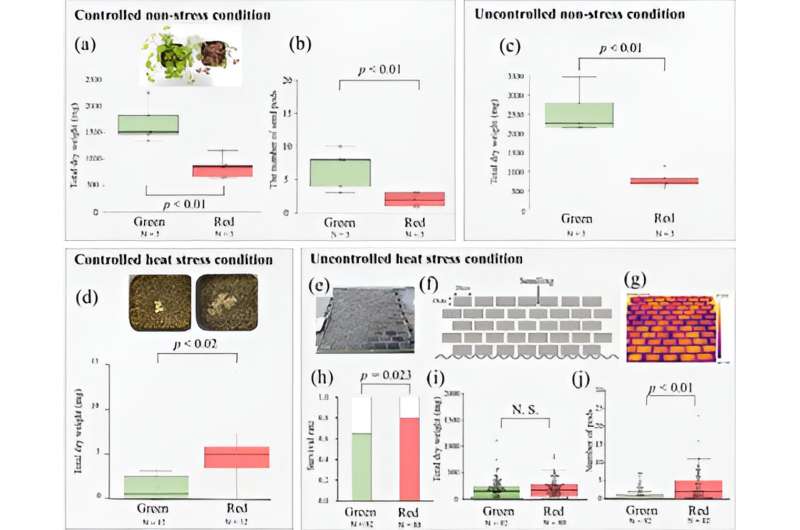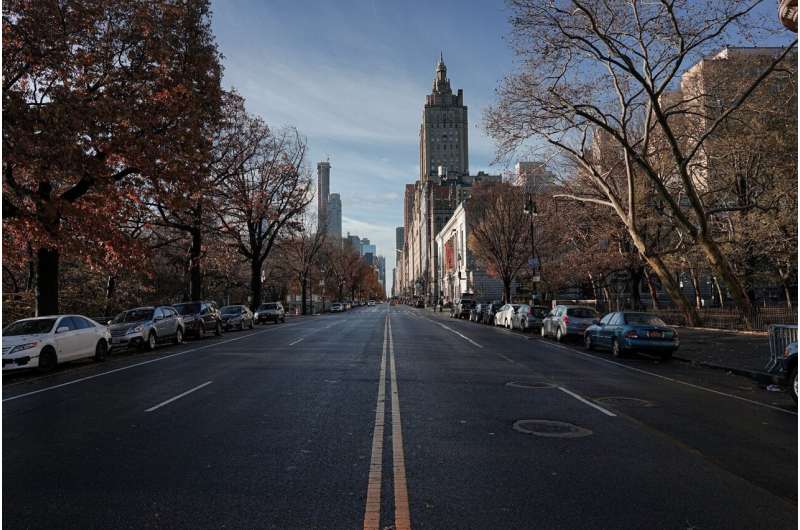This article has been reviewed according to Science X's editorial process and policies. Editors have highlighted the following attributes while ensuring the content's credibility:
fact-checked
peer-reviewed publication
trusted source
proofread
Does urbanization trigger plant evolution?

Urbanization and human activities have transformed a significant proportion of the land on Earth, resulting in the formation of urban environments. These urban environments are man-made habitats that often impose several selective pressures on their inhabitants.
A key characteristic of such environments is the presence of impermeable, heat-retaining surfaces created using brick, stone, asphalt, and concrete. Notably, these surfaces form urban heat islands, i.e., regions with elevated surface temperatures.
An unexpected result of heat stress is the impact on the behavior, physiology, and evolutionary trajectories of resident organisms. Although several studies have investigated the role of urban heat stress on evolution in animals, its effects on plant evolution remain largely unexplored.
To address this gap, a team of researchers led by Associate Professor Yuya Fukano from the Graduate School of Horticulture, Chiba University, Japan, investigated how urban heat islands affect the leaf colors of Oxalis corniculata, also known as the creeping woodsorrel.
This plant exhibits diverse leaf colors ranging from green to red and is found in both urban and non-urban spaces across the world. Research suggests that these color variations serve as an evolutionary adaptation to protect the plant from environmental stress. Moreover, red pigments (anthocyanins) in the leaves are thought to mitigate heat and light-induced damage by intercepting light and forming antioxidants.
To investigate this evolutionary theory, Dr. Yuya Fukano and his team, comprising Dr. Wataru Yamori from the University of Tokyo, Dr. Yuuya Tachiki from Tokyo Metropolitan University, and Dr. Kenta Shirasawa from the Kazusa DNA Research Institute, conducted field observations of the leaf color distribution in the creeping woodsorrel, across urban and non-urban regions at the local, landscape, and the global scales.
Their study findings were published in Science Advances. "We noticed that the red-leaved variants of the creeping woodsorrel commonly grew near impervious surfaces in urban areas but rarely grew in farmlands or green spaces in and around the city," says Dr. Fukano.

The team identified a pattern where green-leaved variants of the creeping woodsorrel dominated green spaces while their red-leaf counterparts dominated the urban sites of Tokyo at both the local and landscape levels. Upon further examination of an online database, the team discovered that these geographical findings were consistent across the globe, thereby confirming a link between urbanization and leaf color variations in the creeping woodsorrel.
This motivated the team to quantify the adaptive benefits of these leaf color variations by examining their influence over biomass growth and photosynthetic ability under heat stress and non-heat stress conditions across controlled and uncontrolled cultivation experiments.
Through these experiments, the team found that the red-leaf variants exhibited superior growth rates and higher photosynthetic efficiency under high temperatures, whereas green-leaf variants thrived in lower temperatures. As a result, red-leaf variants tend to thrive in urban areas with low plant density due to high stress tolerance. The opposite is true for their green-leaf counterparts, which display higher growth competitiveness in lush green areas.
"Although these findings will not change much in the immediate future, this study showcases one of the most popular examples of ongoing evolution that can be observed in urban areas," says Dr. Fukano.
The team also conducted genome-wide genetic analyses, which indicated that the red-leaf variant of O. corniculata may have evolved multiple times from the ancestral green-leaf plant. Discussing the implications of these findings, Dr. Fukano says, "Urban heat islands are precursors to global warming. Understanding the rapid adaptive evolution of urban organisms to high temperatures will provide valuable insights on ecosystem dynamics and sustainable crop production."
These adaptations to high-temperature stress likely extend beyond leaf color, thereby warranting further research into various plant traits for a comprehensive understanding of plant adaptation to urban heat islands.
More information: Yuya Fukano et al, From green to red: Urban heat stress drives leaf color evolution., Science Advances (2023). DOI: 10.1126/sciadv.abq3542. www.science.org/doi/10.1126/sciadv.abq3542
Journal information: Science Advances
Provided by Chiba University





















